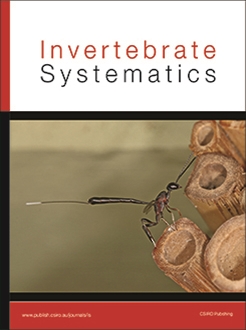Ruiwen Wu, Lili Liu, Liping Zhang, Arthur E. Bogan, Gengyun Niu, Dandong Jin, Xiaoping Wu, Xiongjun Liu
Invertebrate Systematics 38 (7), (4 July 2024) https://doi.org/10.1071/IS24014
KEYWORDS: anatomical features, China, Cosmopseudodon, cryptic species, freshwater mussels, Integrative taxonomy, mitochondrial genome, morphological characters, multi-locus phylogeny, Unionidae
Accurate identification and precise classification of freshwater mussel species that are among the most threatened freshwater taxa in the world, play a crucial role in informing conservation and management efforts for these organisms. However, due to the variability in shell morphology, relying solely on shell characteristics for species taxonomy poses significant challenges, thereby impeding effective conservation planning and management. The freshwater mussel genus Ptychorhynchus Simpson, 1900 is one such group in need of study. We integrate molecular phylogeny, shell morphology and soft-body anatomy to examine the classification of Ptychorhynchus denserugata (Haas, 1910) and Ptychorhynchus resupinatus (von Martens, 1902). The COI barcoding data support the clustering of P. denserugata and Nodularia douglasiae within a single clade, and P. denserugata shares the diagnostic feature of the genus Nodularia, i.e. knobs or bumps on the inner mantle surface in the excurrent aperture. Therefore, by integrating molecular data and anatomical characteristics, we confirm that the nominal species P. denserugata syn. nov. is a new synonym for N. douglasiae. The multi-locus (COI + ND1 + 16S rRNA + 18S rRNA + 28S rRNA) phylogeny and mitochondrial phylogenomics support the transfer of P. resupinatus from Ptychorhynchus to the newly elevated genus Cosmopseudodon stat. rev., as Cosmopseudodon resupinatus stat. rev. that is still considered the designated type species. We also describe a new species based on integrative taxonomy, i.e. Cosmopseudodon wenshanensis sp. nov. The comprehensive understanding of the taxonomy and diversity of the revised Cosmopseudodon species, and shell heteromorphism of N. douglasiae (=P. denserugata syn. nov.), will serve as a crucial foundation for further scientific assessment and conservation strategies pertaining to these taxa.
ZooBank: urn:lsid:zoobank.org:pub:E48968B1-DF0F-42AD-8F31-B8C95F23CE57


